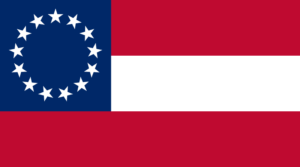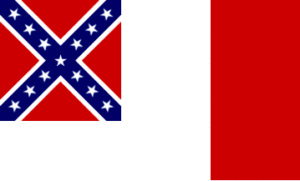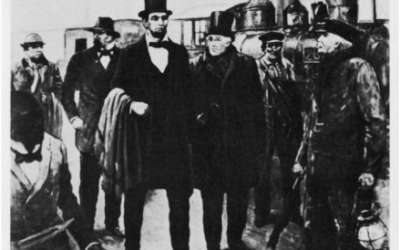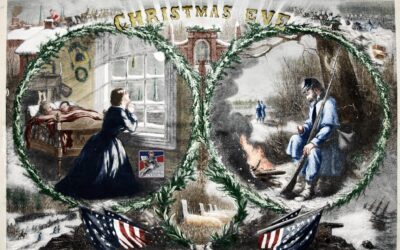The following is a guest post from Michael Cronin who is the Founder and CEO of Gettysburg Flag Works
———————————
When we think of American flags, “red, white and blue” is probably the first thing that comes to mind. When it comes to civil war flags, this is still the case, but the faithful red, white and blue took on a couple of different forms. The Confederate States of America actually adopted three unique flag patterns, one in 1861, another in 1863 and the third in 1865.

In 1863, the Confederacy adopted the “Second National” pattern, which was also referred to as the “Stainless Banner”. This civil war flag was first used on the casket of Stonewall Jackson. One reason for the change from the prior flag was that some thought that it was too similar to the “Stars and Stripes” and that it was too easy for soldiers to be confused on the battlefield. In essence, this design was the battle flag for the Army of Northern Virginia (a red square with a blue “X” marked with stars, also known as the Southern Cross) on a white field. It also incorporates 13 stars to include the additions of Virginia, Arkansas, Tennessee, and North Carolina. This flag came to prominence based on the fame of the armies of Gen. Robert E. Lee. Lee’s army had achieved reputation for success and heroism, and it used the Southern Cross battle flag as its symbol. Gen. P.G.T. Beauregard once said that the battle flag was “consecrated by the best blood of our country on so many battlefields.”
The Third National pattern was similar to the Second National pattern, but with a smaller white field and the addition of a red vertical stripe on the
right. The purpose of this was that with the Second National pattern, when the wind wasn’t carrying the flag and it hung limply, it appeared to be the white flag of surrender. However, there were not too many of these flags in service during the war. It was adopted on March 4, 1865, and Gen. Lee’s army surrendered at Appomattox just a few weeks later.
A lesser-known flag was never formally adopted by the Confederate government, but was adopted by the people and incorporated in five southern states in 1861. This one was the “Lone Star Flag” or the “Bonnie Blue Flag”, which was solid blue with a single white star in the center. This flag was used by independence-seeking groups and achieved popularity in the South in 1861. It included West Florida and Texas. The Bonnie Blue Flag was raised over the state capitol when Mississippi adopted an ordinance of secession.
Regardless of your favorite version, the American Civil War and the flags that represented it have earned a permanent spot in our history books. Despite the complex and controversial causes of the American Civil War (slavery, states’ rights, and sectionalism to name a few), it will still go down in history as one of the deadliest wars in American history. This bloody 4-year conflict took approximately 750,000 soldiers and an irresolute number of civilian lives. Historians estimate that the death toll consumed 10% of all Northern males between the ages of 20 and 45 years old and 30% of Southern males between the age of 18 and 40.
It’s been said “the Civil War was one of the most defining moments in our history and no event since our nation began has had such an impact, both positive and negative, on all aspects of American life.” This war has impacted the government, the power of the President, the economy, the role of women in society, African Americans, and so much more. It is for these, and many other important reasons, that the American Civil War is such an important lesson in US history.
To help educators teach the American Civil War, Gettysburg Flag is graciously offering the chance for one of our readers to win a Civil War flag of their choosing. Simply complete the raffle form below and good luck.
a Rafflecopter giveaway





0 Comments